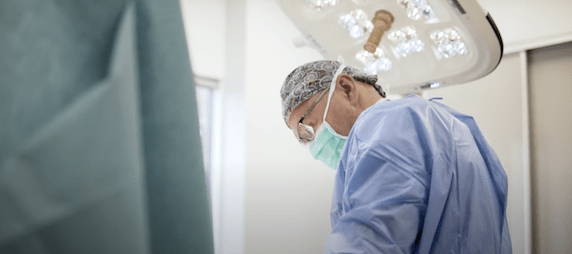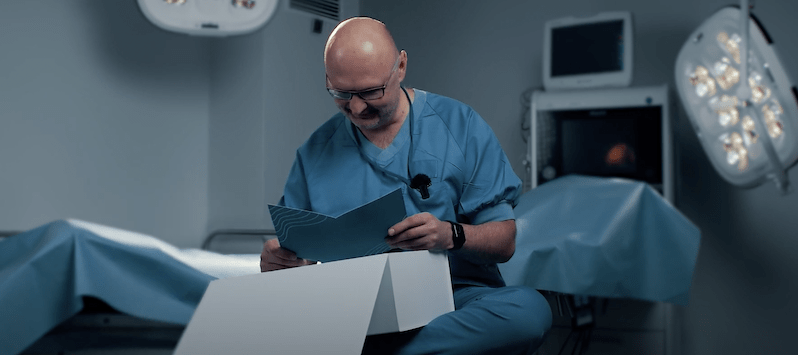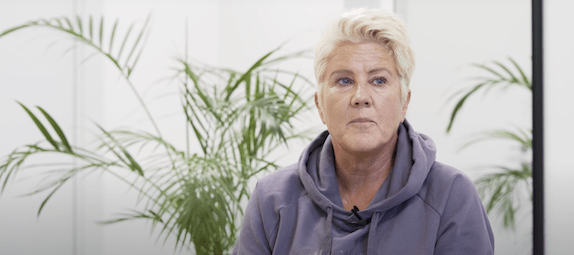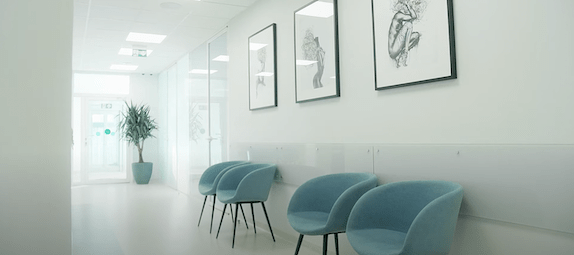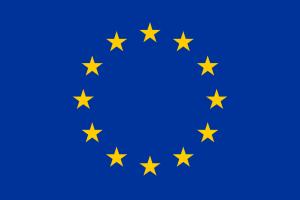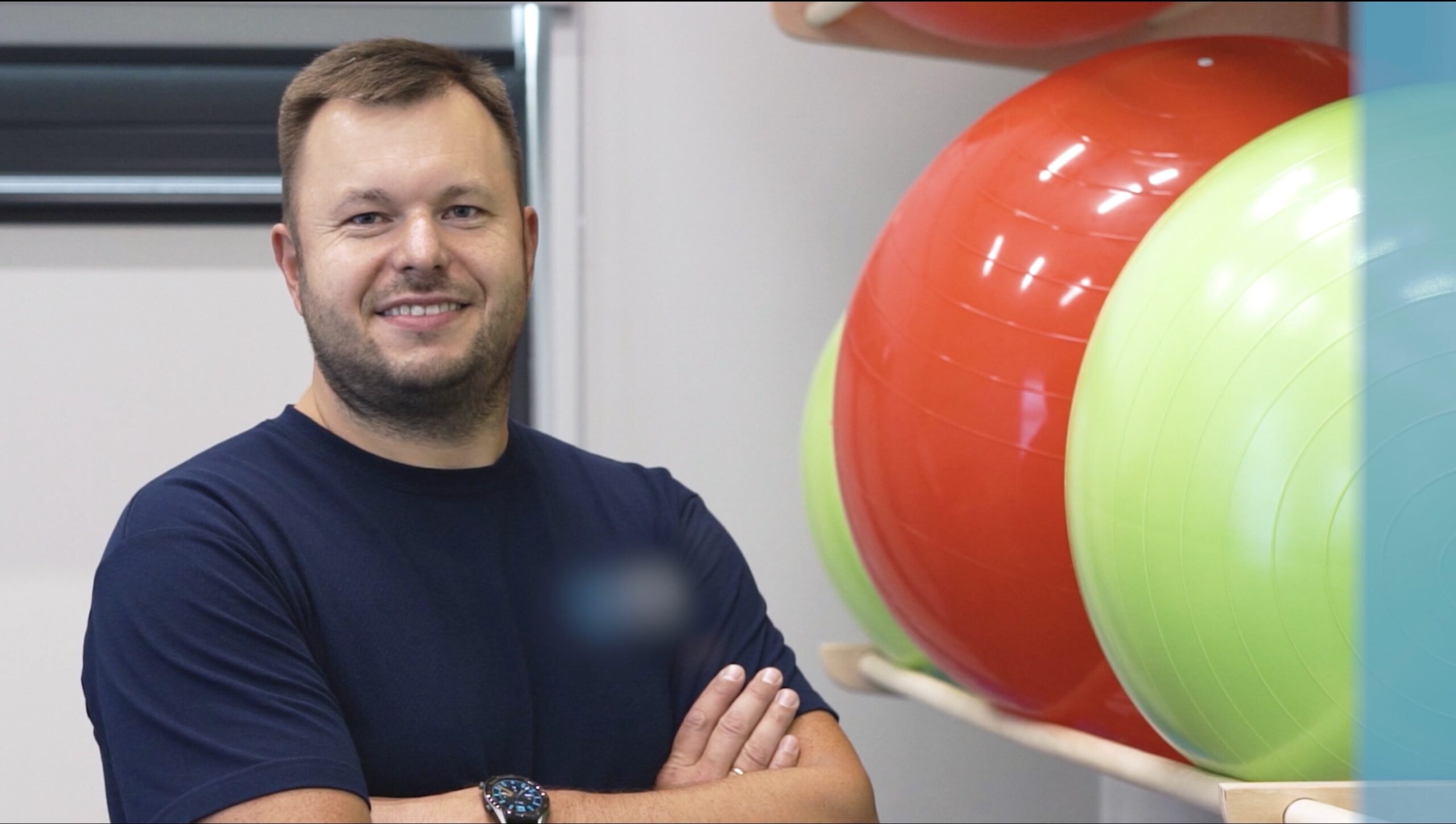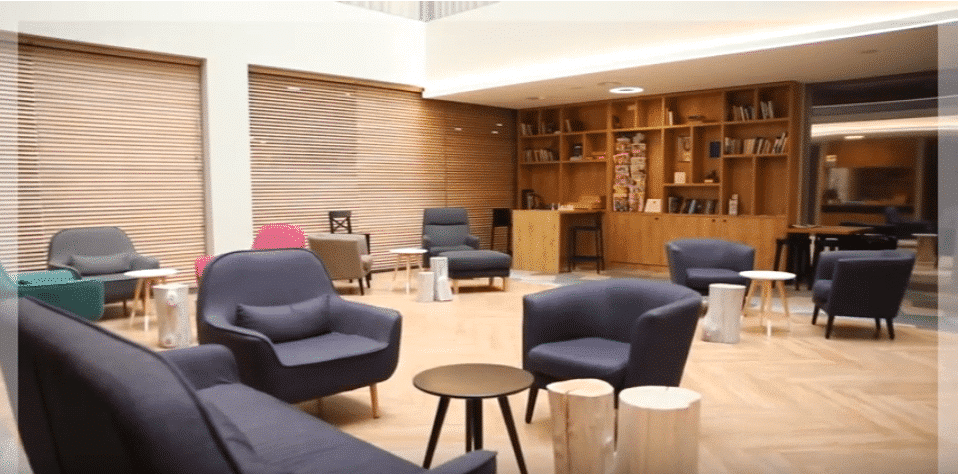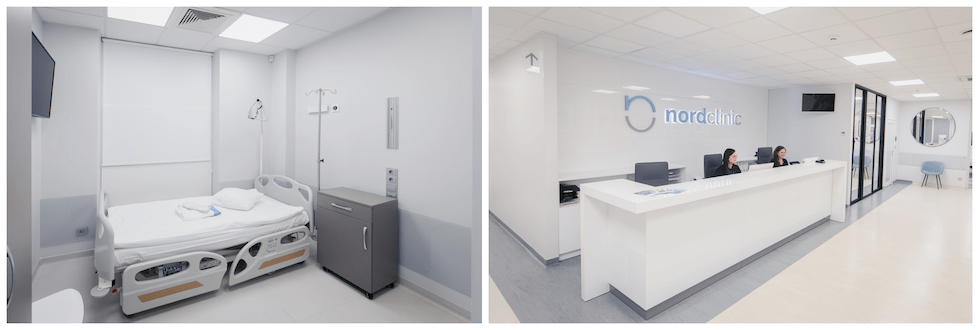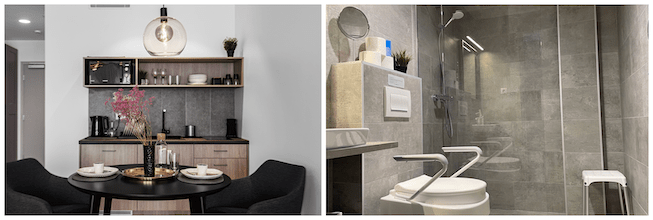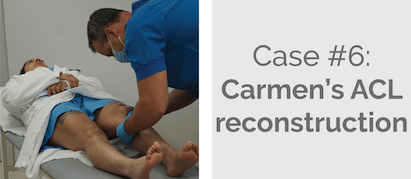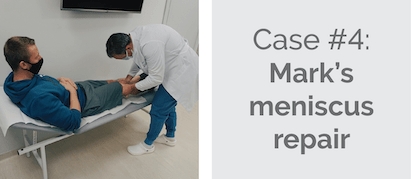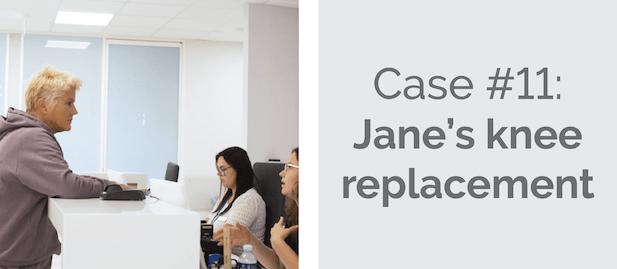Articular Cartilage Regeneration Abroad: Lithuania
We are one of the leading orthopaedic surgery clinics for medical tourists in the European Union. We are proud of the fact that over 90 % of our patients come from the UK, Ireland, Norway, Sweden, the United States, Canada and other countries.
Reviews & Facebook group
Our patients and clinic in the media
Prices
- articular cartilage regeneration – 2.700 £
- x-ray performed in 1 day – FREE, MRI performed in 1 day – from 155 £
- accommodation with medical care – from 62 £ per night
- consultation with the surgeon
- necessary health tests
- surgery
- anaesthesia
- hospitalisation
- 24/7 personal assistance during your stay
- transfers to / from the airport, hotel and clinic
- all documents translated to English
Get your surgery for free by claiming a refund from your local health board. The clinic helps patients with the documents needed to claim a refund after following the EU directive route for medical treatment abroad. It applies to patients who are insured under the systems of one of the EU countries and may not get the surgery due to long waiting times.
- articular cartilage regeneration – 3.000 €
- x-ray performed in 1 day – FREE, MRI performed in 1 day – from 180 €
- accommodation with medical care – from 74 € per night
- consultation with the surgeon
- necessary health tests
- surgery
- anaesthesia
- hospitalisation
- 24/7 personal assistance during your stay
- transfers to / from the airport, hotel and clinic
- all documents translated to English
The price includes Zimmer, Biomet, DePuy and other highest quality implants. The type of implants depends on each individual case. It will be discussed after review of your medical documentation by a surgeon.
Get your surgery for free by claiming a refund from your local health board. The clinic helps patients with the documents needed to claim a refund after following the EU directive route for medical treatment abroad. It applies to patients who are insured under the systems of one of the EU countries and may not get the surgery due to long waiting times.
Patient stories
Clinic videos
Nordorthopaedics Center Of Excellence
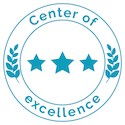
Our surgeon Valdemar Loiba
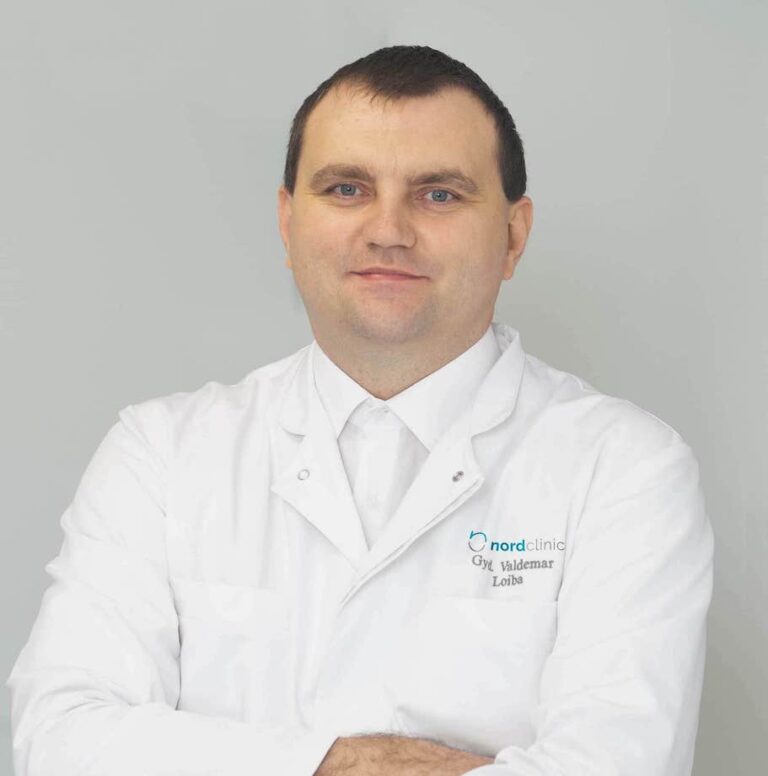
- More than 15 years of working experience
- Performs 400+ arthroscopies a year.
- Author of 6 international oral presentations
- Read more
Refund for EU patients
Get your surgery for free by claiming a refund from your local health board. The clinic helps patients with the documents needed to claim a refund after following the EU directive route for medical treatment abroad. It applies to patients who are insured under the systems of one of the EU countries and may not get the surgery due to long waiting times. On average our patients from the EU countries get fully refunded by their local health board in 5 months after their surgeries.
Rehabilitation packages
One of the most important factors for a quick and full recovery after surgery is proper rehabilitation. Rehabilitation helps recover after surgery as well as prevents formation of blood clots and helps avoid most of the postoperative complications and side effects. We offer two different rehabilitation packages:
Outpatient rehabilitation in Kaunas with a physiotherapist. The rehabilitation clinic is equipped with modern facilities. Individual rehabilitation programs are prepared by a kinesiologist with over 20 years of experience, Prof. Laimonas Siupsinskas. This type of rehabilitation is best suited for people who are physically active, athletes and those wishing to return to sports as soon as possible.
Rehabilitation in Kaunas – € 120 / £ 100 for one 1 h physiotherapy session per day.
- personalized rehabilitation course;
- specialist who is also a physiotherapist for Lithuanian Men’s National Basketball Team;
- all required medication;
- transportation to/from the rehabilitation clinic;
- read more about outpatient rehabilitation in Kaunas.
Inpatient rehabilitation at SPA resort in Druskininkai. It is equipped with modern facilities. The professionals there have years of experience working with people after various surgeries and injuries.
Rehabilitation at SPA resort in Druskininkai – from € 220 / £ 183 per day
- personalized rehabilitation course;
- room with TV and private bathroom;
- three meals a day;
- all medication needed;
- transportation to/from the rehabilitation centre;
- read more about inpatient rehabilitation in Druskininkai.
Our clinic
Self-catered accommodation with medical care
11 reasons that make us the most popular orthopaedic clinic abroad
One of the most important factors for a quick and full recovery after surgery is proper rehabilitation. Usually, clinics are not able to offer this due to costs savings. Our patients can choose between two inpatient and outpatient options: rehabilitation with a physiotherapist of the Lithuanian national basketball team, prof. L. Siupsinskas or rehabilitation at a medical SPA.
Our team of 5 orthopaedic surgeons has 10-20 years of experience in the field in total performing over 1.000 different orthopaedic surgeries per year. Moreover, our surgeons are members of various prestigious surgical societies both Lithuanian and international. Our leading joint replacement surgeon S. Tarasevicius is an author of 150 scientific publications in different medical journals, who has performed more than 3.500 joint replacement surgeries during 15+ years of his professional experience.
We are one of the leading orthopaedic surgery clinics for medical tourists in the European Union. We are proud of the fact that over 90 % of our patients come from the UK, Ireland, Norway, Sweden, the United States, Canada and other countries.
One of the world’s leading medical technology companies and orthopaedic implant manufacturers, Smith & Nephew, have chosen Nordorthopaedics as Center of Excellence in the Baltic States.
We are trusted by our patients and we appreciate all the reviews and feedback collected over the years. Find more than 150 testimonials here or on Google.
Already more than 4.000 of our former, current and future patients joined our online community with the aim to build a space for opinions and mutual support. Members are welcome to share experiences about their visit to the clinic and to discuss all surgery-related matters. No other orthopaedic clinic can offer such group support.
Being a true member of the International Society of Arthroplasty Registries, Lithuania is one of the leaders in low joint replacement revision rates, as only 9% of surgeries in Lithuania require revision in 10 years after surgery. Moreover, with the implants used at our clinic, only 2-3% of surgeries require revision in 10 years after surgery, while revision rates in some other Western countries, for example, USA, is as high as 17% in 10 years after surgery. The implants used at our clinic have been evaluated by other countries’ registries as those ensuring longest implant life, as compared to products of other manufacturers. Moreover, thanks to our active participation in collecting data for the registries, the surgical technique used at our clinic ensures best surgical outcomes.
Our clinic is seen on different media mentions like: BBC News, BBC Radio, The Telegraph, MailOnline, Winnipeg Free Press, CTV News, CBC, RTE Radio, itv.
Our clinic works according to the highest standards set by the European Union. This helps to guarantee the quality of medical services. We care about the safety, comfort and successful results of our patients from all over the world.
The clinic helps patients with the documents needed to claim a refund after following the EU directive route for medical treatment abroad. It applies to patients who are insured under the systems of one of the EU countries and may not get the surgery due to long waiting times.
We provide customer service in 9 foreign languages including English, Swedish, Norwegian, Danish, Italian, Spanish, French, Russian, Polish. Everyone in our clinic speaks English, including nurses, assistants and the surgeon.
Athletes treated at Nordorthopaedics
Official clinic of Lithuania national football teams

Highest quality implants
Our clinic uses implants based on their performance in international registries.
Being a true member of the International Society of Arthroplasty Registries, Lithuania is one of the leaders in low joint replacement revision rates, as only 9% of surgeries in Lithuania require revision in 10 years after surgery. Moreover, with the implants used at our clinic, only 2-3% of surgeries require revision in 10 years after surgery, while revision rates in some other Western countries, for example, USA, is as high as 17% in 10 years after surgery. The implants used at our clinic have been evaluated by other countries’ registries as those ensuring longest implant life, as compared to products of other manufacturers. Read more here.
13 patients' case studies
Direct flights to Lithuania





What is an articular cartilage and how can it get damaged?
Articular cartilage can be imagined as a lubricated cushion that covers the ends of the joint-forming bones. It reduces friction and provides a smooth surface for the joint as it bends and transmits weight. Articular cartilage is 2 to 4 mm thick and is composed of water, collagen, proteins, and cartilage cells, also known as chondrocytes. Cartilage is not supported by any nerves or blood vessels, and, therefore, has a low capacity to repair itself after damage. Elbows, wrists, ankles, and shoulders can all suffer cartilage damage, however, the knee joint is the one that gets damaged the most.
One can suffer articular cartilage damage after receiving a direct force, such as falling down, stopping quickly, or turning.
High impact sports are especially dangerous because cartilage wears off more quickly in the presence of repeated traumatizing movements.
Also, articular cartilage can become damaged from transmitting heavy weight. That is why an obese patient is much more likely to suffer from articular cartilage damage than someone with a normal body weight.
A reduced joint activity can also be one of the reasons for articular cartilage damage. Movement is crucial for the circulation of synovial fluid which is found inside the knee capsule. It is responsible for sustaining healthy joints and preventing articular cartilage from damage.
What are the treatment options for someone with articular cartilage damage?
There are a few surgical techniques used to treat articular cartilage damage. Bear in mind that the best treatment option will be chosen individually after a consultation with an orthopaedic surgeon.
Chondro Gide technique works by activating cartilage regeneration and replacing damaged cartilage with a matrix. A surgeon removes old cartilage, inspects the size of the damaged area and prepares the matrix which will be later placed instead of the old cartilage. A number of holes are then drilled into the damaged area which stimulates the healing process and ensures active supply of the chondrocytes and nutrients needed to form a new cartilage. Further on, the holes are covered with the matrix that allows those new cartilage cells to stick and form new strong cartilage.
JointRep is a type of orthopaedic implant which is composed of artificial biopolymers. JointRep is a unique type of treatment because it can be performed arthroscopically just with a few small incisions. The implant is in liquid form, therefore, it can be injected directly into the area and smoothly cover damaged cartilage. When injected, the implant solidifies into a gel-like substance which is full of sugar, glucosamine and water. These constituents stimulate the growth of a new healthy cartilage.
Lipogems is a method that works by stimulating regeneration of the cartilage. It is unique because a patient’s own fat is used to treat the damaged cartilage. Fat cells, also known as adipocytes, have regenerative properties, and, thus, can function as stem cells in the formation of new cartilage. Firstly, fat is obtained from the abdomen, hands, or thighs. It is then purified, cleaned and injected into the joint where it works on repairing damaged tissue.
What to expect after articular cartilage repair surgery?
- If articular cartilage repair is performed on the knee or ankle joint, a person will not be able to step on the operated leg for at least a few weeks. The first recovery phase is a passive motion therapy.
- Crutches are needed for up to six weeks post-surgery.
- A continuous passive motion machine, which stimulates synovial fluid production and blood supply to the joint, is used to move the joint without putting on weight.
- Majority of the patients can return to work in a week or two after the surgery. Patients are prescribed physical exercise routine which they have to follow for up to 3 months post-surgery. Physical therapy focuses on improving the strength of the muscles around the joint, which subsequently reduces pressure on the cartilage.
- Sportspeople can return to active training in 4 months after the surgery.
Is rehabilitation needed? How long does it take to recover?
Rehabilitation is just as important as the surgery itself, and thus, articular cartilage repair patients have to follow a detailed recovery plan which is designed to help them regain mobility and live an active lifestyle again. Most people are able to return to moderate physical activities after 6 to 8 weeks, however, full recovery should be expected after 3 to 6 months.
Is articular cartilage repair permanent or does it require further treatment?
The outcome of articular cartilage repair surgery depends on the extent of cartilage damage and on how successful the recovery process is. Approximately 80 % of cartilage repair surgeries are successful. A follow-up care includes close monitoring of new cartilage development through MRI imaging. MRI (Magnetic Resonance Imaging) is a non-invasive means to check on the healing process. MRI is safe and does not emit any radiation because neither X-rays or other radiation is used.
Who is a good candidate for articular cartilage repair?
Articular cartilage surgery is the best option for those patients who had cartilage damage as a result of:
- injury;
- repetitive joint use;
- inborn joint abnormalities;
- hormonal disorders, such as osteochondritis dissecans.
Eligible patients should otherwise have good health and wish to remain active. The prospective patients should be determined to undergo surgery and actively participate in their recovery afterwards. The patients who are affected by osteoarthritis (cartilage deterioration due to aging) cannot be treated with articular cartilage surgery and should be consulted for other possible types of treatment (e.g. knee joint replacement).
Preparing for articular cartilage repair
Preparing for the visit at the clinic is just as important as the surgery or rehabilitation. During the first consultation with an orthopaedic surgeon a patient is informed about the detailed treatment plan. The surgeon examines the patient’s medical history and evaluates certain medical tests, like MRI images (Magnetic Resonance Imaging). The patient should prepare to discuss past injuries and events which might have damaged the cartilage.
When the surgery is scheduled, a patient can focus on preparing for it. It is also recommended to have a list of all the medications taken. There are certain drugs and substances which can impair blood clotting, and thus, should be avoided (aspirin, ibuprofen, CoQ10, glucosamine chondroitin, flaxseed, vitamin E, fish oil, green tea, chia seeds, primrose oil, and garlic).
Patients are strongly advised to refrain from smoking at least one month before and after the surgery. Nicotine, which is found in tobacco, can significantly slow down the recovery by restricting the blood flow in the operated joint.
Pre-conditioning is very important in any knee surgery. Strengthening the muscles around the joint will certainly make rehabilitation easier and faster. A physiotherapist will suggest exercises that are suitable for the patient. Gentle stretching and aerobic exercises help to maintain flexibility, strength, and healthy weight.
A few weeks before the surgery patient can make the necessary arrangements at their homes for post-op recovery and purchase pain medication to use after the surgery. Moving downstairs or arranging furniture in a way that is comfortable to walk with a cane or crutches will make returning back home stress-free. Depending on doctor’s recommendations, a few weeks before the surgery the patient should consider purchasing assistive devices, like crutches or knee brace.
A week before the surgery a patient should undergo all the necessary medical tests. These tests usually include blood work, urine test, ECG (Electrocardiogram), MRI (Magnetic Resonance Imaging), or others.
On the day of the surgery a patient should wear loose comfortable clothes which are easy to put on and take off, and should bring along assistive devices. The patient should not eat for at least 6 hours before the surgery in order to avoid regurgitation during the surgery. The patient should inform the medical team about any bruises, cuts, or rash near the joint, as they can possibly increase infection risk.
Risks and possible side effects of articular cartilage repair
There are certain risks which are associated with articular cartilage repair that every prospective patient should get familiar with. Fortunately, complications occur rather seldom as every precaution is taken to provide the best medical care. Articular cartilage repair may include such risks as infection, allergic reaction to anaesthesia, bleeding inside the knee joint, or blood clot formation.
Returning to sports and normal physical activity after articular cartilage repair
Recovery after articular cartilage repair consist of several stages. Each stage has different goals and eventually leads to full recovery and successful return to active lifestyle and sports.
Phase 1 (0-6 weeks). At this time CPM (Continuous Passive Motion) machine is used to start the joint moving and increase the range of motion. Cryotherapy, also known as cold therapy, is used to decrease inflammation and pain. A patient should wear a joint brace and use crutches when walking. The patient might also exercise in a pool after the incisions have fully healed.
Phase 2 (6-12 weeks). Full range of motion should be reached by this time. A patient should further work on increasing muscle strength and progress to full weight-bearing.
Phase 3 (12+ weeks). A patient should continue exercising as in phase 2 and further strengthen the muscles, endurance, and balance. At this time it is possible to return to light physical activities, such as golfing, walking, or biking.
Phase 4 (4-18 months). At this stage a patient can return to activities of higher physical demand. Depending on a particular sport, the patient should progress on doing advanced exercises regularly and successfully participate in active sports again.
Send us your enquiry








